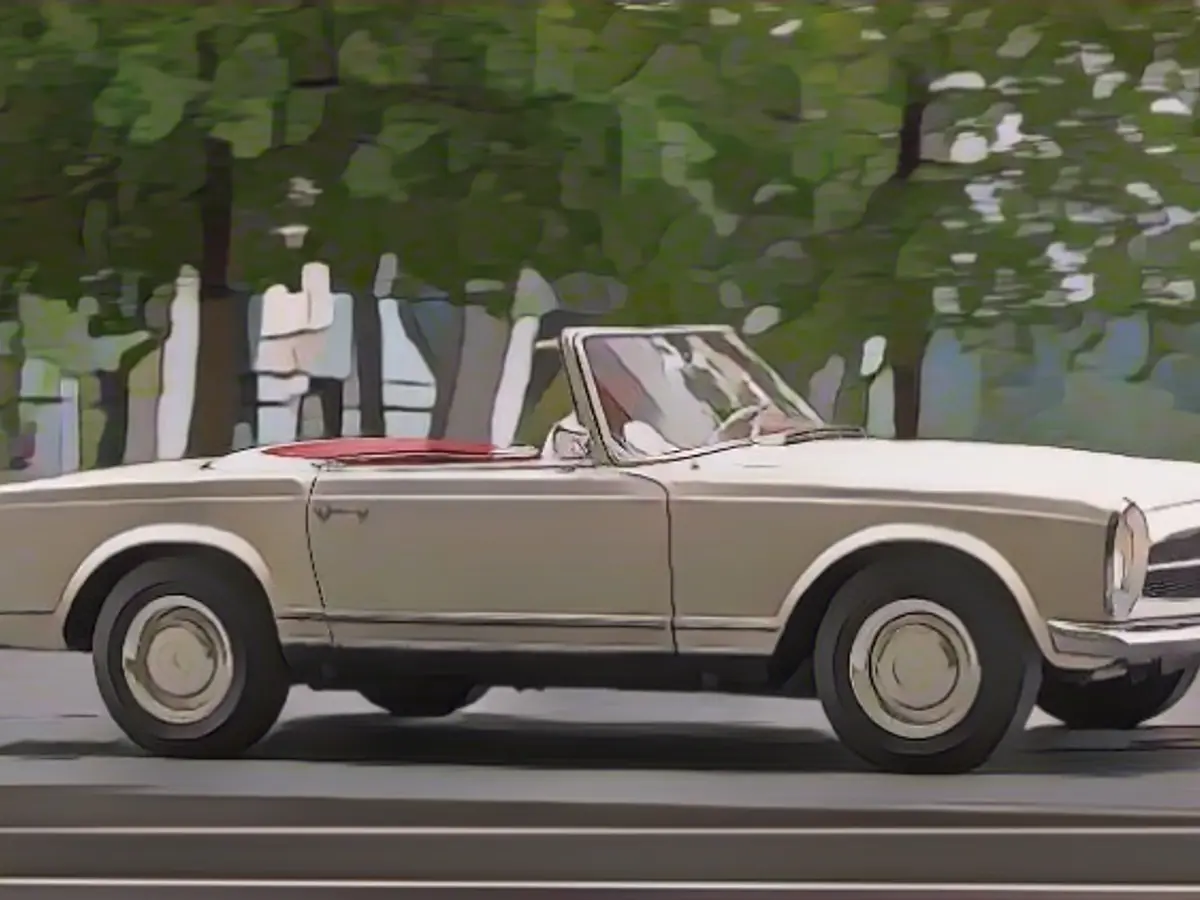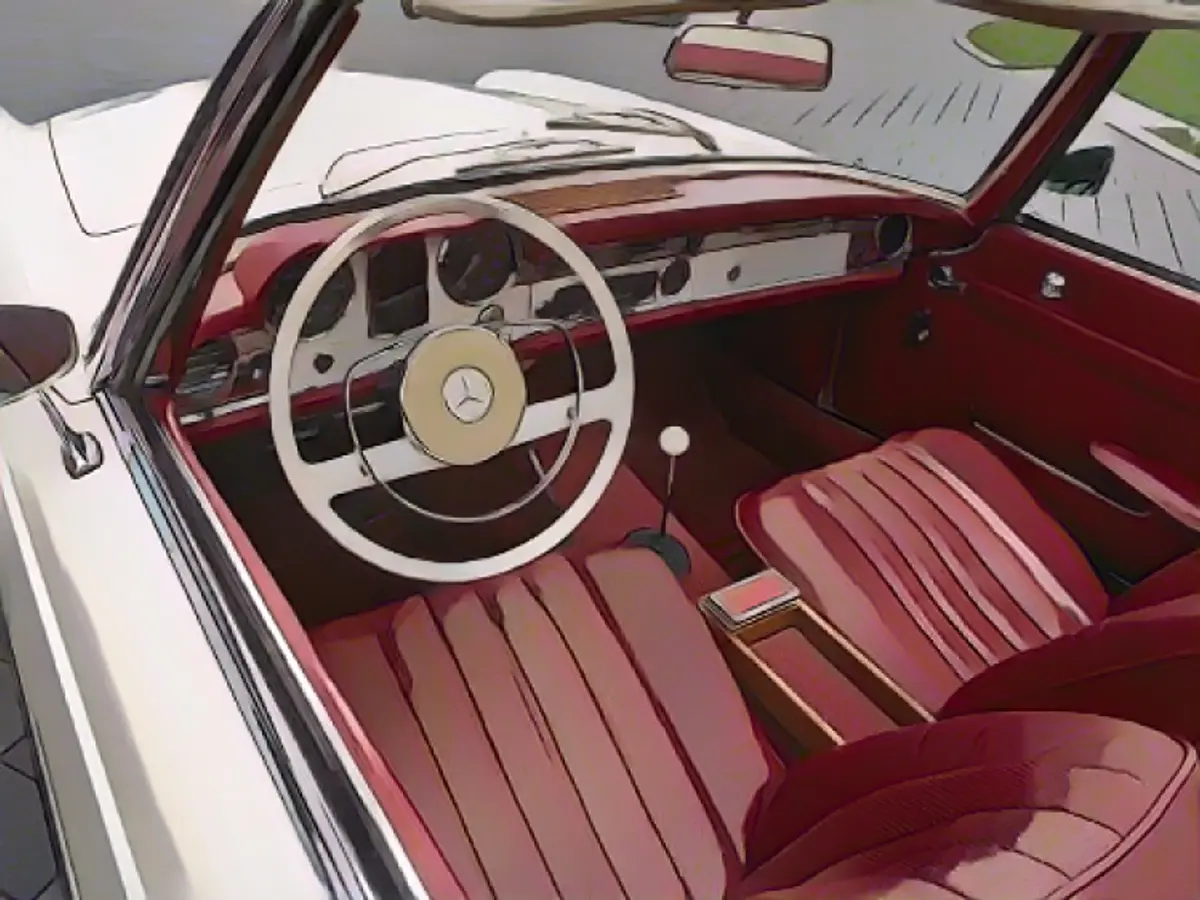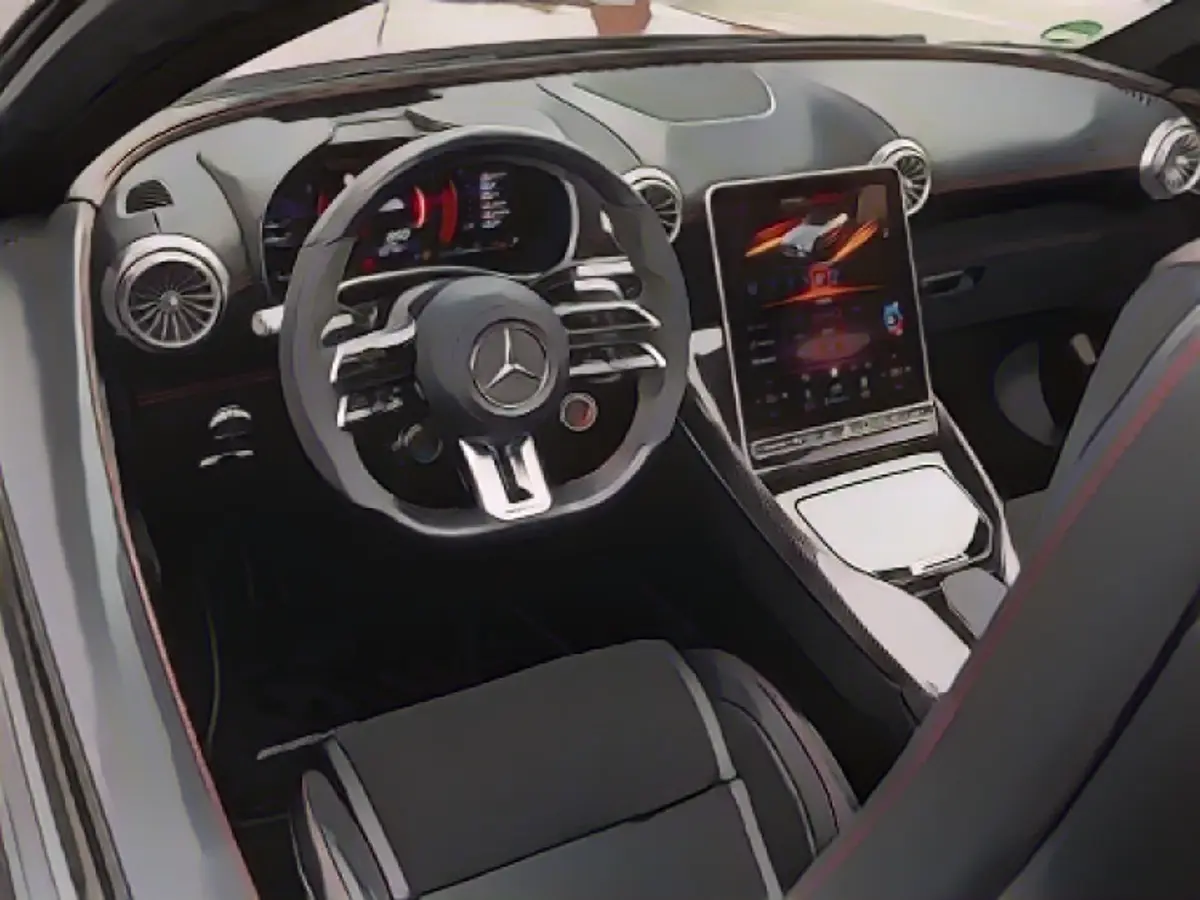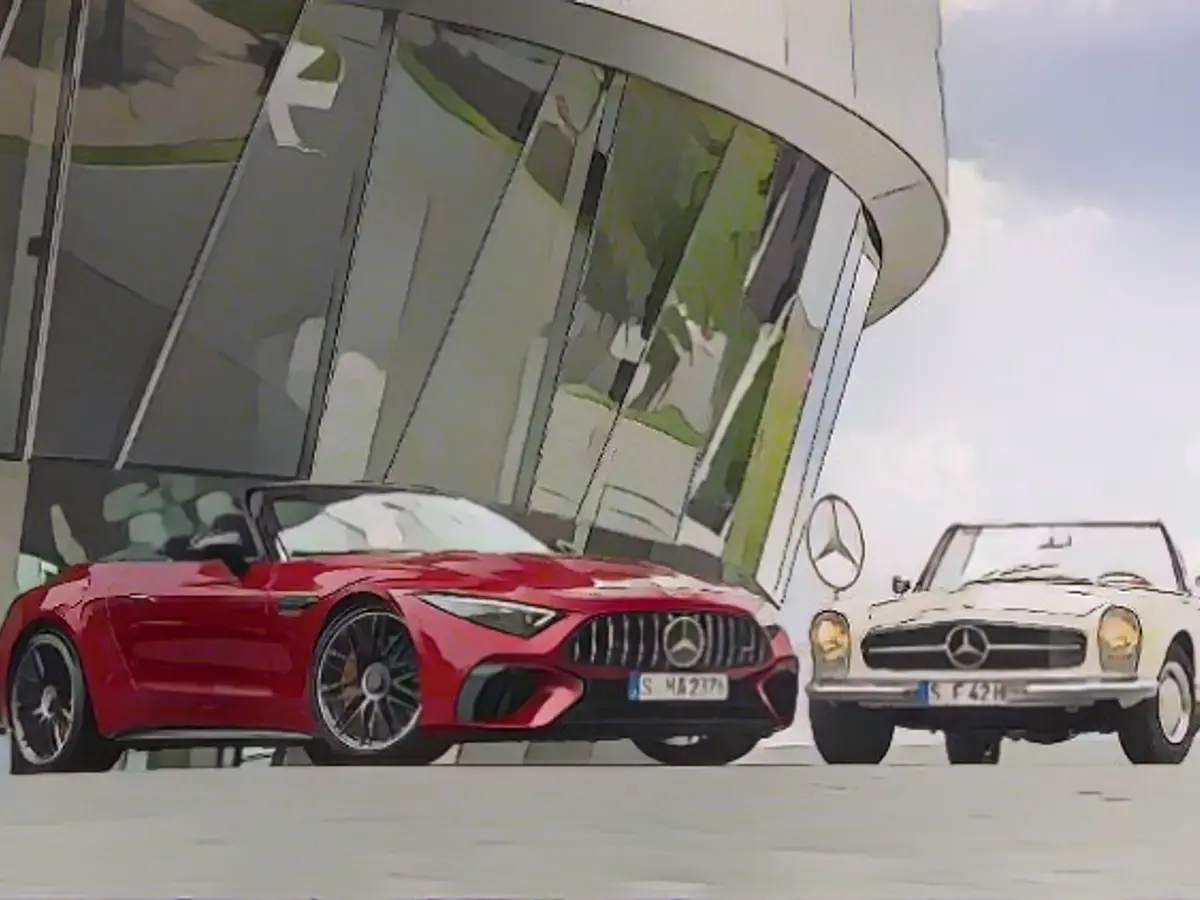Old or new? Mercedes 230 SL meets SL 63 4Matic
After 60 years of the SL 113 series, better known as the Pagoda, the Mercedes roadster, like many other cars, has become bigger, faster and more powerful. AMG now has development sovereignty over the open-top model series, giving it back the sporty touch it deserves.
Have all the stories about the Mercedes SL been told? Far from it, the open-top Mercedes icon is so diverse that you can always find new twists and turns. What's more, it is so popular with people interested in new and classic cars that it is impossible to write enough about it. And there are always plenty of occasions anyway.

This year marks the 60th anniversary of the popular 113 model series, which is now so popular that prices have climbed into the six-figure range in recent years. And this despite the fact that just under 50,000 113s have rolled off the production line (many of which are probably still in existence). That is twice as many as its predecessor, the 190 SL, in a similarly long production period. Around half of these went to US buyers. Compared to the later SL versions, the Pagoda is visually quite dainty.
The Pagoda is relatively sporty

However, this early SL is not a real lightweight - at least in relation to its dimensions. The 4.28-metre-long tourer weighs up to 1.5 tons as a 280 SL. The early 230 SL borrowed from the Mercedes Museum is probably a little lighter. Just as well, because the M127 II in-line six-cylinder engine with a displacement of 2.3 liters is not overly powerful by today's standards with 150 horses and 196 Newton meters of torque.
However, when paired with the ZF five-speed gearbox, the two-thirty makes quite a sporty impression. The six-speed engine is particularly lively at higher revs and also develops a throaty timbre. It is also nice that the five-speed box is quite easy to operate. And be careful here too - please always think in terms of old cars.

After an extensive lap 113, I swap the car for the modern SL. Given the huge difference in performance, a four-cylinder engine could have been used, as was the case in the predecessor of the 113 (190 SL). But no, that wouldn't suit the SL. And there is a suspicion that Mercedes also thinks in its heart of hearts that it doesn't fit and will revise it again. Let's wait and see.
Whether a 63 would have been necessary for the comparison and the somewhat weaker 53 would also have sufficed is open to debate. But the Untertürkheimers just didn't have it any smaller. So off we go for a test drive with the familiar four-liter V8 under the hood. At the push of a button, the twin-turbo wakes up with a nice, light V8 sound, but not as loud as used to be the case in Affalterbach. Fine. AMG may have cut back on volume, but not on power. The 585 hp two-tonner gets off to a powerful start. It can also rev willingly, but what is almost more impressive is how powerfully the eight-cylinder work of art under the hood, personally signed by each final fitter on a plaque attached to the engine, pushes with 800 Newton meters (from 2500 rpm) in the mid-range at the slightest movement of the accelerator pedal.
A current SL is absolutely suitable for everyday use

But the engine is not everything. The main difference between the SL in the past and today is its multifunctionality. And although the model has been wearing a chic fabric hood again since 2021, the interior is absolutely quiet. What's more, you can stretch out on the comfy armchairs if you're going on a long journey. Long distances in the SL, really? Sure, if you can make do with 213 liters of trunk space, then yes.
The pleasure of fresh air is just a few seconds away. When the three-layer soft top is lowered, you are driving on the sunny side of life (provided the sun is shining) and can traditionally have a little warm air blown into your neck by the so-called Airscarf if the outside temperature is not quite right. This is now even standard. Of course, convertible customers in the sixties could only dream of something like this.

On the other hand, things are rougher in the Pagoda, as the position behind the steep windshield is less protected. But some people like exactly that. Incidentally, at some point during the construction cycle, the 113 had the option of dispensing with a soft top altogether. The version popularly known as the California version was given a rear bench seat and the strikingly curved hardtop (hence the name Pagoda).
New or old SL? A question of philosophy. The Pagoda is at least easy to drive, although not as easy as a modern SL. It doesn't brake as well, steers more sluggishly, doesn't drive as smoothly - you have to take all that into account. On the other hand, the little Mercedes is clearly laid out, so it doesn't even need parking beepers to get around the parking garage comfortably.
However, even the latest SL version is not a huge car with a length of 4.70 meters. But you do feel much more wrapped up and isolated from the outside world when the top is down, and even when it is up you feel further away from the road.
Incidentally, the Pagoda was a very safe car in its day. The Roadster had crumple zones, as it was technically derived from the then ultra-modern W111 - an early form of the S-Class, if you like. Crash tests were already the order of the day here.
The R232 is bursting with safety and comfort features
In terms of safety and comfort features, the model with the internal designation R232 certainly draws on the full range. Without question, the SL also steers with the rear wheels and compensates for rolling movements hydraulically. All measures which, together with its precise steering, allow it to storm through the bend at speed. It is also really powerful straight ahead: after 3.6 seconds, 100 km/h is shown on the speedometer display and AMG lets the car run at 315 km/h.
To prevent traction problems from arising in the first place, the SL comes with four driven wheels for the first time in this form. But if you look at the figures, the 230 SL doesn't do too badly either. Despite its poor aerodynamics, it can also reach 200 km/h, but logically takes considerably longer to do so. Accelerating to country road speed alone takes around ten seconds, even in the manual transmission version.
But that shouldn't be a problem, the aged SL doesn't have to lay down a hot tire. Most potential buyers are likely to use it as an investment or pleasure vehicle that gets a run at the weekend. The advantage of Mercedes classics is the extremely good spare parts situation.
A modern SL is a bit of a jack-of-all-trades among luxury vehicles. Apart from the limited transportation options, it is fully suitable for everyday use - even in the cold winter. Of course, this also includes full infotainment. The Swabians now offer the full MBUX drone including a moving central screen plus head-up display. A manual gearbox, on the other hand, has long been a thing of the past, with the automatic taking over this task in nine different ways. And although it is the wiry version without a torque converter (a multi-plate clutch serves as a starting clutch), the automatic transmission is relatively comfortable. Somehow it makes sense - the SL is more of a tourer than a racer, although it is incredibly powerful.
At the end of a comparison of old and new, the question inevitably arises: which one to choose? But this can only be meant rhetorically, as the only thing the two actually have in common is the model name and perhaps the radiator grille with the large central star. Well, and the option of open-top driving. And the fact that passers-by are pretty sure to be looking behind. The R232 is also not a model that can be seen on the road very often - this year, not even 3000 units were registered in Germany. A Pagoda is now a veritable Sunday car that you don't wear out in everyday use.
Nowadays, prospective buyers of the 113 model series have to budget for at least around 85,000 euros, and you don't get a top car for that. The new SL costs at least 127,146 euros, and for this price you can get the unpopular four-cylinder engine with 381 hp. V8 enjoyment is available from 166,737 euros (SL 55 4Matic with 476 hp). The powerful SL 63 4Matic costs 194,654 euros. If you order in the next few weeks, you may be able to drive an open-top version in the spring.
Unfortunately, both SLs will remain just a dream for most people. After all, these are not citizen-friendly prices. But you still have to be allowed to dream.
Read also:
The Mercedes AMG brand has taken charge of the open-top model series, bringing back the sporty feel to the Mercedes roadster. Many vintage Mercedes models, such as the Mercedes AMG and the Mercedes 230 SL, are popular with collectors and enthusiasts of automotive history. The convertible and roadster versions of the Mercedes SL have always been in high demand, making Mercedes models a subject of endless fascination for car enthusiasts.
Source: www.ntv.de








